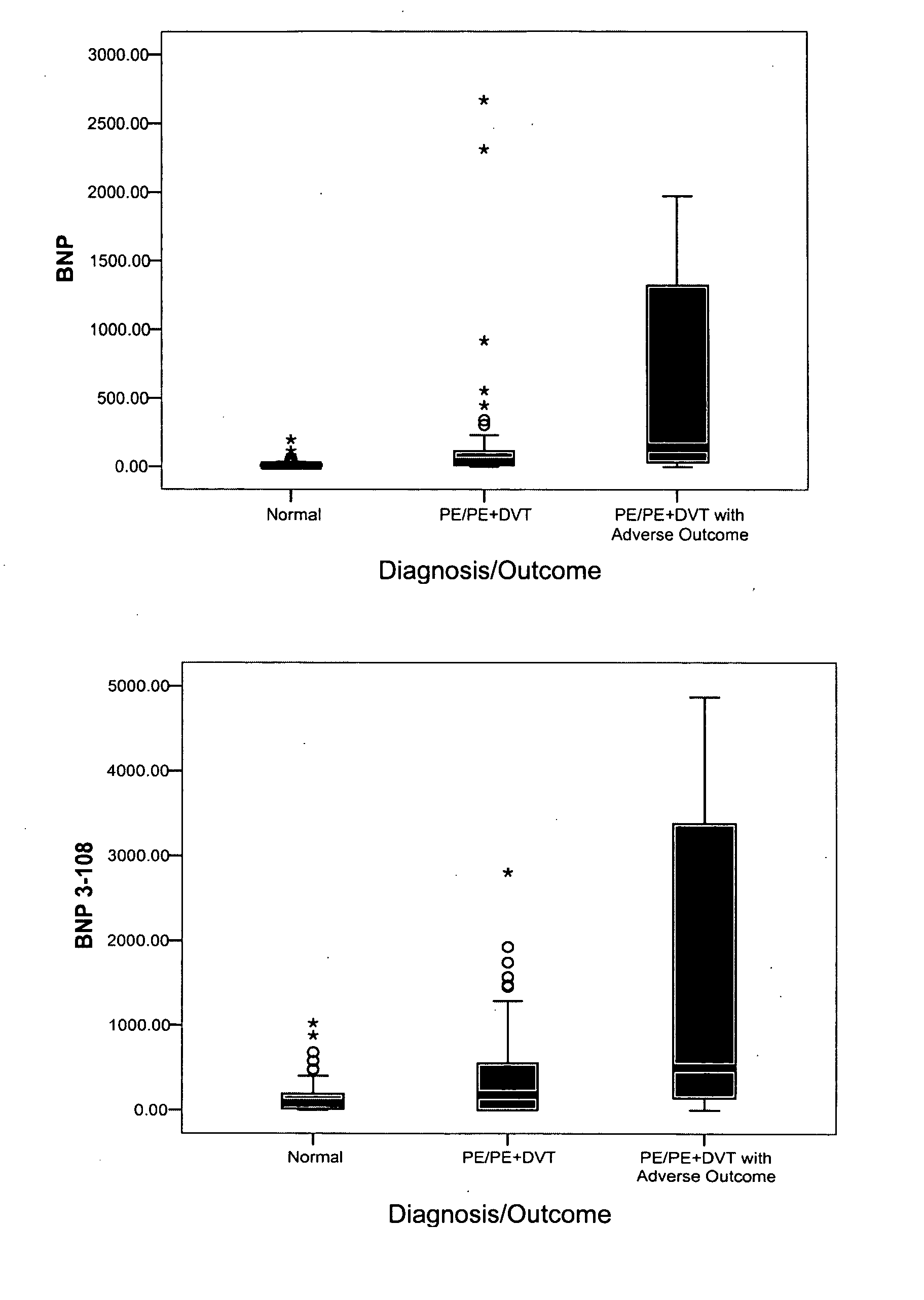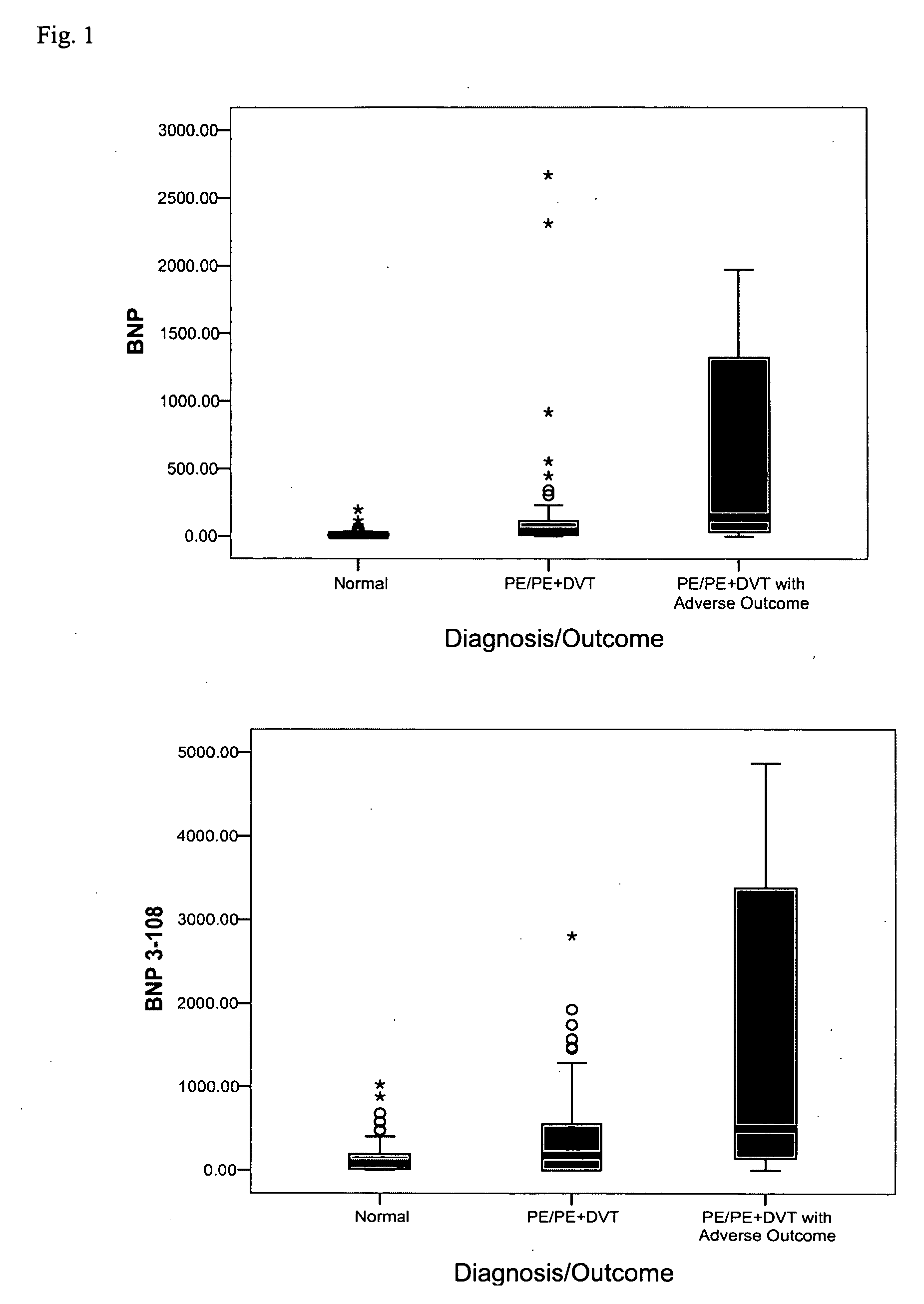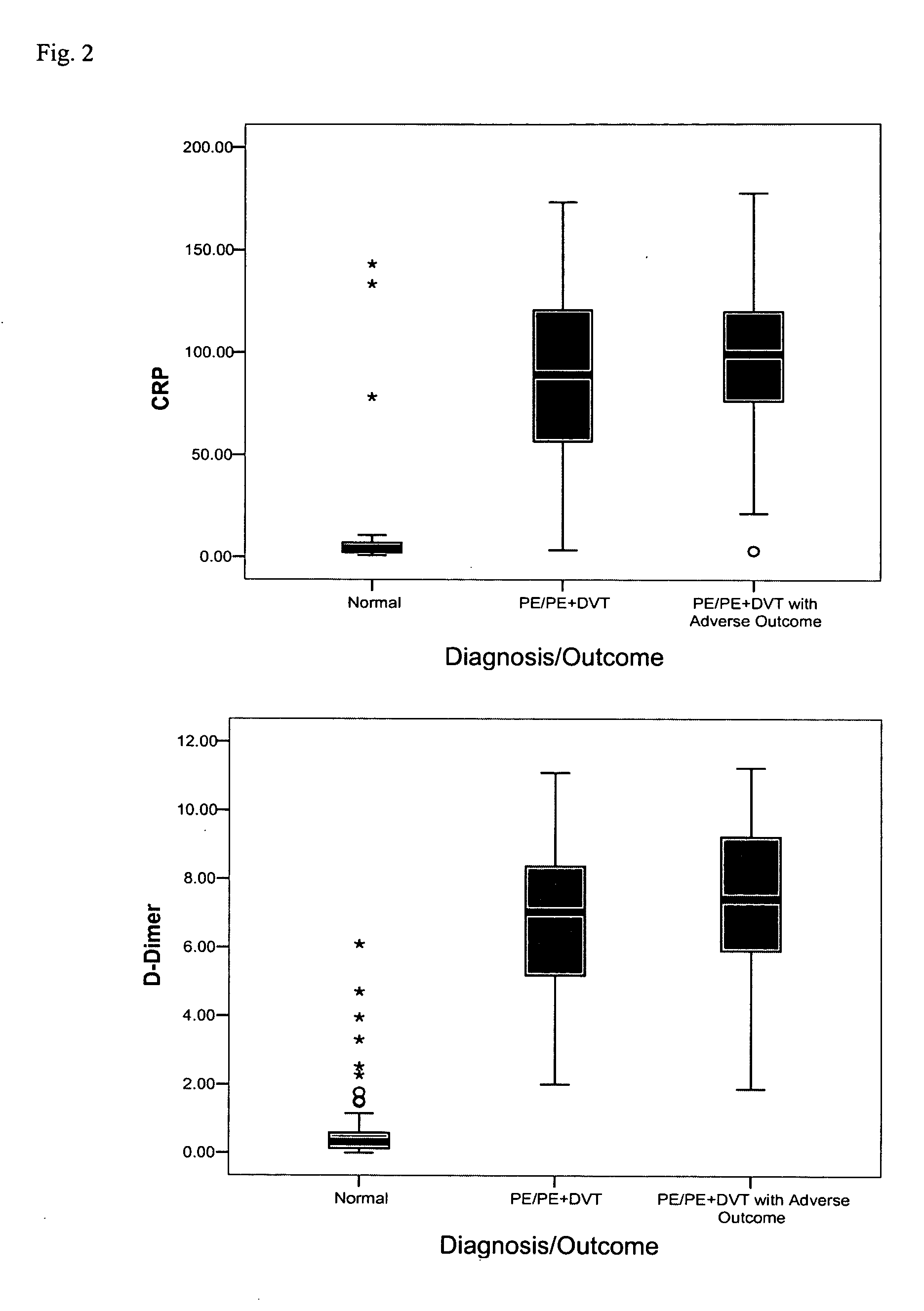Methods and compositions for the diagnosis of venous thromboembolic disease
a technology of venous thromboembolic disease and compositions, applied in the direction of instruments, biochemistry apparatus and processes, material analysis, etc., can solve the problem of low predictive value of dvt, and achieve the effect of increasing the discriminating power of marker panels
- Summary
- Abstract
- Description
- Claims
- Application Information
AI Technical Summary
Benefits of technology
Problems solved by technology
Method used
Image
Examples
example 1
[0135] Blood specimens are collected by trained study personnel using EDTA as the anticoagulant and centrifuged for greater than or equal to 10 minutes. The plasma component is transferred into a sterile cryovial and frozen at −20° C. or colder. Clinical histories are available for each of the patients to aid in the statistical analysis of the assay data.
example 2
Subject Population
[0136] For Examples 6, 7, 8, and 9 below, samples were obtained from 120 normal healthy controls. A study population consisted of prospectively enrolled inpatients and emergency department patients with confirmed pulmonary embolism. The inclusion criterion that triggered a review for eligibility was the presumed diagnosis of pulmonary embolism based upon the initial interpretation of either the computerized tomography (CT) chest angiography scan or ventilation-perfusion (V / Q) lung scan. Exclusion was based upon the following criteria: (1)>12 hours since start of heparin therapy, (2) systolic hypotension (50% (e.g., metastatic cancer, end-stage AIDs, end-stage heart or renal failure with no plan for transplantation or hemodialysis therapy), (5) clinical plan to not treat the patient, (6) anatomy or clinical condition that precluded the ability to measure right ventricular function via echocardiography, (7). permanent inability to walk for any reason, (8) prisoners ...
example 3
Biochemical Assays
[0138] Individual assays were performed as described below in Examples 4 and 5. Assays were configured to bind the following markers, and results are reported in the following examples using the following units (alternate names and units of measurement are in parenthesis): acidic calponin (ng / mL); adrenomedullin (pg / ml); angiopoietin-4 (ng / ml); basic calponin (ng / ml); bone morphogenetic protein 4 (BMP4) (ng / ml); B-type natriuretic peptide (BNP, BNP77-108) (pg / ml); BNP1-108 (proBNP) (pg / ml); BNP3-108 (pg / ml); BNP79-108 (pg / ml); caspase-3 (ng / mL); CCL-11 (pg / ml); calcitonin gene-related peptide (CGRP) (pg / ml); creatine kinase-BB (CK-BB) (ng / ml); creatine kinase-MB (CK-MB) (ng / ml); C-reactive protein (CRP) (μg / ml); D-dimer (ng / ml); soluble elastin fragments (sELAF) (ng / ml); endothelin-1 (pg / ml); glutathione-S-transferase 3 (GSTP) (ng / ml); heart-type fatty acid binding protein (hFABP) (ng / ml); interleukin 1 receptor antagonist (IL-1ra) (pg / ml); interleukin-25 (IL-25) ...
PUM
 Login to View More
Login to View More Abstract
Description
Claims
Application Information
 Login to View More
Login to View More - R&D
- Intellectual Property
- Life Sciences
- Materials
- Tech Scout
- Unparalleled Data Quality
- Higher Quality Content
- 60% Fewer Hallucinations
Browse by: Latest US Patents, China's latest patents, Technical Efficacy Thesaurus, Application Domain, Technology Topic, Popular Technical Reports.
© 2025 PatSnap. All rights reserved.Legal|Privacy policy|Modern Slavery Act Transparency Statement|Sitemap|About US| Contact US: help@patsnap.com



